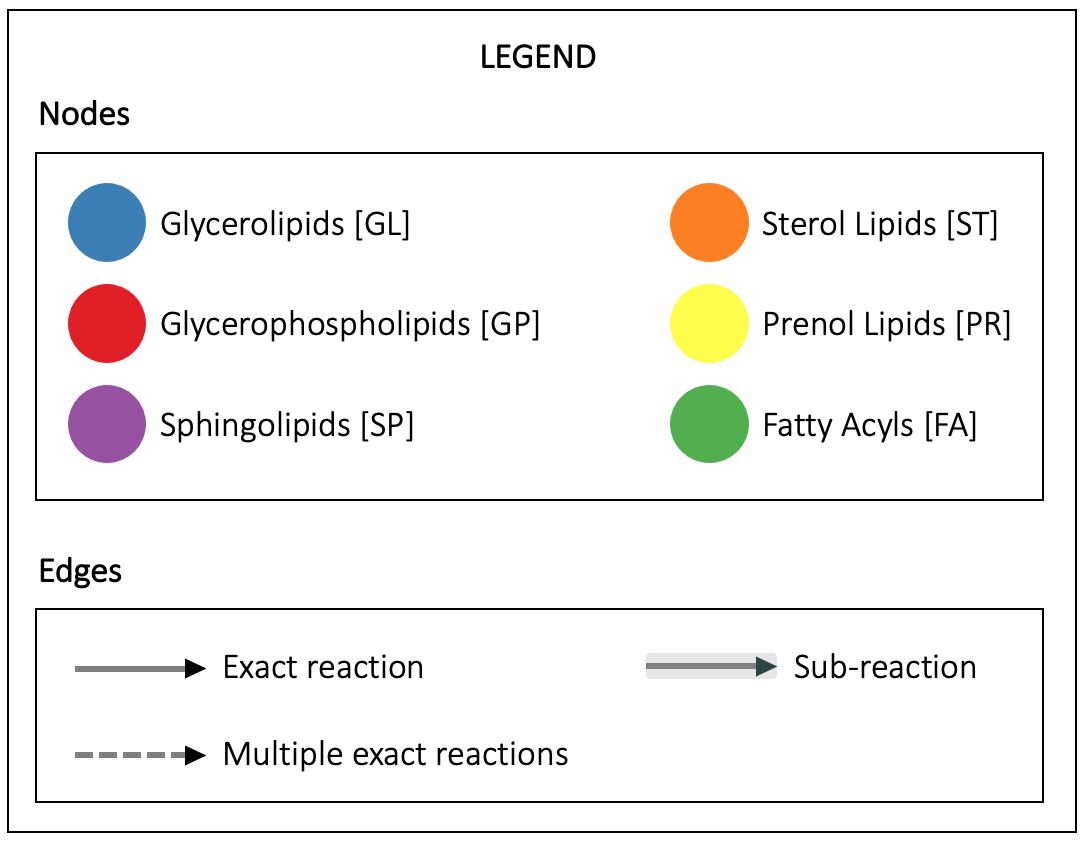Structure Database (LMSD)
Common Name
PE(18:1(9Z)/0:0)
Systematic Name
1-(9Z-octadecenoyl)-sn-glycero-3-phosphoethanolamine
Synonyms
- 9-Octadecenoic acid (Z)-, 3-[[(2-aminoethoxy)hydroxyphosphinyl]oxy]-2-hydroxypropyl ester, (R)-
- PE(18:1/0:0)
- LPE(18:1)
- LPE(18:1)
LM ID
LMGP02050004
Formula
Exact Mass
Calculate m/z
479.301192
Sum Composition
Abbrev Chains
LPE 18:1
Status
Curated
3D model of PE(18:1(9Z)/0:0)
Please note: Where there are chiral atoms but the stereochemistry is undefined, the 3D model takes an arbitrary conformation
Classification
Category
Main Class
Sub Class
Biological Context
1-Oleoyl-2-hydroxy-sn-glycero-3-PE is a naturally-occurring lysophospholipid and an analog of plasmalogen lysophosphatidylethanolamine.1,2,3 It induces transient increases in intracellular calcium in PC12 rat neuronal cells in a concentration-dependent manner, an effect that can be blocked by the lysophosphatidic acid receptor 1 (LPA1) antagonist AM095 .2 1-Oleoyl-2-hydroxy-sn-glycero-3-PE (100 ng/ml) increases IL-2 production in CD1d-stimulated murine natural killer T (NKT) cell hybridoma 2H4 cells.3 It also induces production of IL-4, but not IFN-γ, in murine splenocytes when used at a concentration of 100 ng/ml and in mouse serum when administered at a dose of 1 μg per animal, indicating induction of the T helper 2 (Th2) response. 1-Oleoyl-2-hydroxy-sn-glycero-3-PE levels increase in interscapular brown adipose tissue (iBAT) in mice following three-day cold exposure.1
This information has been provided by Cayman Chemical
References
1. Marcher, A.B., Loft, A., Nielsen, R., et al. RNA-Seq and mass-spectrometry-based lipidomics reveal extensive changes of glycerolipid pathways in brown adipose tissue in response to cold. Cell. Rep. 13(9), 2000-2013 (2015).
2. Lee, J.M., Park, S.J., and Im, D.S. Lysophosphatidylethanolamine increases intracellular Ca2+ through LPA1 in PC-12 neuronal cells. Biochem. Biophys. Res. Commun. 461(2), 378-382 (2015).
Reactions
Filter by species:
ⓘ
Reactions are shown if the E.C. number of the enzyme catalysing it is annotated in the UniProt database for a species belonging to the selected taxonomic class.
Click on an edge to display the reaction(s).

String Representations
InChiKey (Click to copy)
PYVRVRFVLRNJLY-MZMPXXGTSA-N
InChi (Click to copy)
InChI=1S/C23H46NO7P/c1-2-3-4-5-6-7-8-9-10-11-12-13-14-15-16-17-23(26)29-20-22(25)21-31-32(27,28)30-19-18-24/h9-10,22,25H,2-8,11-21,24H2,1H3,(H,27,28)/b10-9-/t22-/m1/s1
SMILES (Click to copy)
[C@](COP(=O)(O)OCCN)([H])(O)COC(CCCCCCC/C=C\CCCCCCCC)=O
Other Databases
LIPIDAT ID
7287
HMDB ID
CHEBI ID
PubChem CID
SwissLipids ID
Cayman ID
Calculated Physicochemical Properties
Heavy Atoms
32
Rings
0
Aromatic Rings
0
Rotatable Bonds
24
Van der Waals Molecular Volume
493.54
Topological Polar Surface Area
128.31
Hydrogen Bond Donors
3
Hydrogen Bond Acceptors
7
logP
6.62
Molar Refractivity
129.54
Admin
Created at
-
Updated at
25th Apr 2022
LIPID MAPS® abbreviations for glycerophospholipids (GP)
The LIPID MAPS® glycerophospholipid abbreviations (PC, PE, etc.) are used here to refer to species with one or two radyl side-chains where the structures of the side chains are indicated within parentheses in the 'Headgroup(sn1/sn2)' format (e.g. PC(16:0/18:1(9Z)). By default, R stereochemistry at the C-2 carbon of glycerol and attachment of the headgroup at the sn3 position is assumed. Also, acyl chains are assumed by default. The 'O-' prefix is used to indicate the presence of an alkyl ether substituent e.g. PC(O-16:0/18:1(9Z)), whereas the 'P-' prefix is used for the 1Z-alkenyl ether (Plasmalogen) substituent e.g. PC(P-16:0/18:1(9Z)).
For molecules with opposite (S) stereochemistry at C2 of the glycerol group and attachment of the headgroup at the sn1 position, the stereochemistry specification of [S] is appended to the abbreviation. The 'Headgroup(sn3/sn2)' abbreviation format is used.
For molecules with unknown stereochemistry at the C-2 carbon of the glycerol group, the stereochemistry specification of [U] is appended to the abbreviation and the structure is drawn with C-2 stereochemistry unspecified.
The LIPID MAPS® glycerophospholipid abbreviations (PC, PE, etc.) are used here to refer to species with one or two radyl side-chains where the structures of the side chains are indicated within parentheses in the 'Headgroup(sn1/sn2)' format (e.g. PC(16:0/18:1(9Z)). By default, R stereochemistry at the C-2 carbon of glycerol and attachment of the headgroup at the sn3 position is assumed. Also, acyl chains are assumed by default. The 'O-' prefix is used to indicate the presence of an alkyl ether substituent e.g. PC(O-16:0/18:1(9Z)), whereas the 'P-' prefix is used for the 1Z-alkenyl ether (Plasmalogen) substituent e.g. PC(P-16:0/18:1(9Z)).
For molecules with opposite (S) stereochemistry at C2 of the glycerol group and attachment of the headgroup at the sn1 position, the stereochemistry specification of [S] is appended to the abbreviation. The 'Headgroup(sn3/sn2)' abbreviation format is used.
For molecules with unknown stereochemistry at the C-2 carbon of the glycerol group, the stereochemistry specification of [U] is appended to the abbreviation and the structure is drawn with C-2 stereochemistry unspecified.